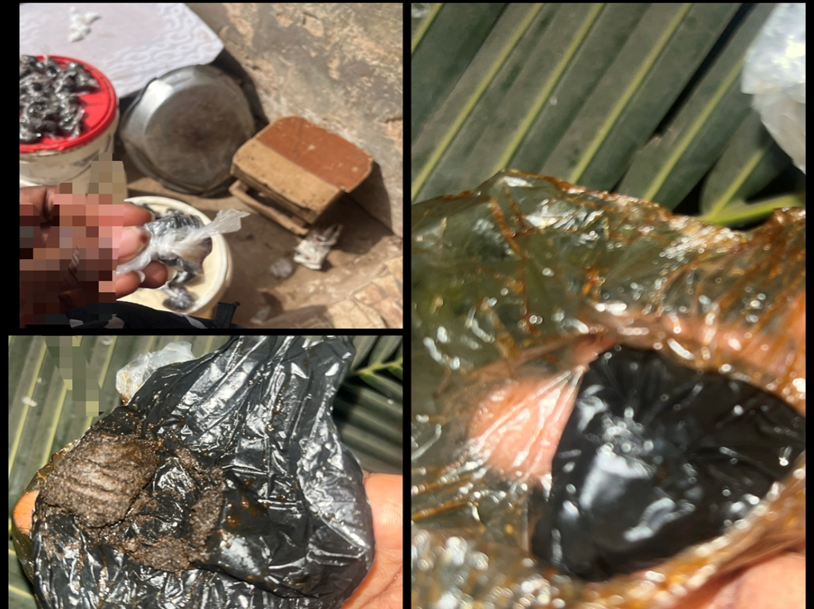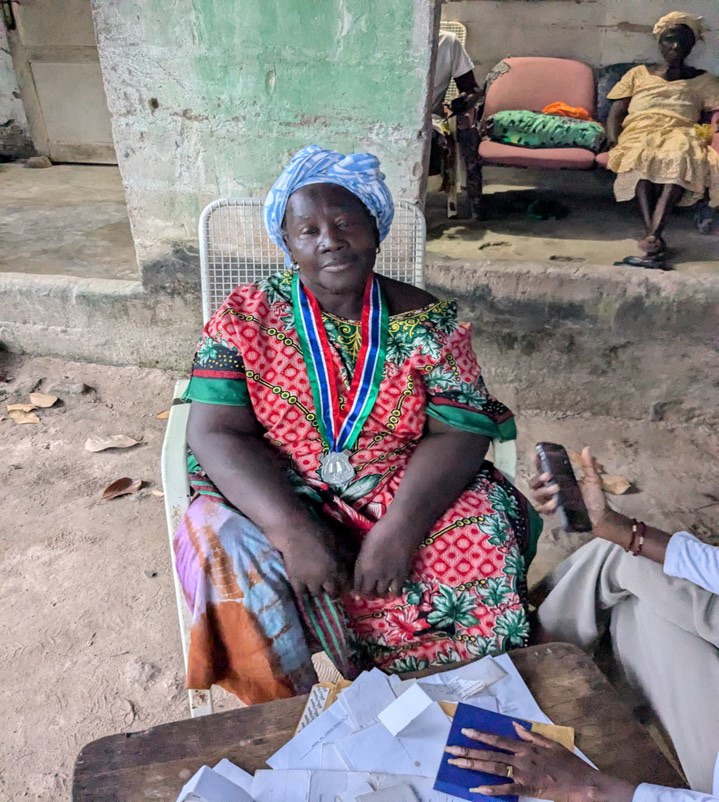By Nyima Sillah

“Taba,” the Mandinka term for tobacco, refers to a locally made tobacco substance that was commonly used by older generations in The Gambia well before independence. This practice, which was often adopted by individuals seeking energy boosts or stress relief, has taken a troubling turn in recent years. Today, a mixture of various substances under the same name is being used predominantly by women and girls, and shockingly, it is applied through their genitals for a range of purposes.
Sold discreetly at local markets and within communities, the substance is usually wrapped in small plastic knot-packs. Women have coined it “Musul la boro” in Mandinka and “Garab jigeen” in Wolof, both meaning “medicine for women.” However, this so-called medicine is having alarming health consequences, with experts raising concerns about its dangerous effects. Addiction to Taba among Gambian women is reportedly on the rise, based on anecdotal evidence.
Due to the sensitive nature of the issue, and at the request of some sources, their real names will be withheld.
Long-Distance Marriage: A Path to Taba Use
Fatima, 35, married in her final year of high school to a husband who soon left The Gambia for Europe via the irregular back-way migration. Over eight years later, her husband still hasn’t been able to visit due to lack of documentation. This separation led Fatima to begin using Taba, which ultimately caused her to develop pelvic inflammatory disease.
“One day, on my way to the market, a neighborhood friend told me about Taba. I tried it, and the first time, I thought I was going to die—I felt dizzy, constantly vomited, and had diarrhea,” Fatima explained. After that first bad experience, she stopped for a while but later resumed using it and became addicted.
“Once you get used to it, you stop worrying about your man. You don’t care whether he’s there or not. Now, I regret it. I’m on continuous medication to treat myself before my husband returns. The treatment is helping, but I don’t feel the same anymore,” she said.
Divorce Caused by Taba Addiction
Isatou had waited for years for a suitor, but no one asked for her hand in marriage. A friend suggested that Taba would help her lose interest in married men. Unfortunately, her first experience was disastrous.
“The first time I used it, I became unconscious. After I recovered, I used it again. Recently, I got married, but I can’t stop. Every time I use it, I feel repulsed by my husband’s touch. When he tries to be intimate, it doesn’t work, and we argue—leading to our divorce,” she shared.
From Medical Remedy to Pleasure

Awa’s experience with Taba began when it was introduced to her as a cure for infections. However, over time, she realized that it did not heal her, and the pleasure it brought kept her hooked.
“It causes bruising, intense itching, and even prevents me from urinating. Sometimes I bleed, but that doesn’t stop me from using it,” Awa explained. “It has become an addiction. I used to apply it only at night when my husband was away, but now I use it more than twice a day.”
Despite its small size and low cost—D10—Awa noted that the more one uses it, the more it drains her financially.
The Booming Business of Taba
Fanta, a seasoned Taba vendor, proudly speaks of her thriving business, narrating “I sell two types of Taba—one for snuff and the intra-vaginal variety. I keep the intra-vaginal Taba hidden, but customers know where to find me,” she said. “On a busy day, I can sell between 2,000 to 3,000 dalasis, with some customers buying up to D500 worth.”
She declared that the intra-vaginal Taba is stored in a plastic bottle, carefully kept away from the wind to prevent it from drying out, as it would lose its potency. Some customers even buy it to resell in Europe.
Kumba, another dealer, explained that the wholesale price is D500 for a full black plastic bag, and she sells individual packs for D10 to D15. She dismissed concerns about its harmful effects, saying, “People say it’s bad, but I see nothing wrong with it. The first time is tough, but once you get used to it, it makes you feel good.”
Kumba admits she doesn’t know the exact chemicals used in Taba, but she believes they don’t cause harm.
The Health Risks of Taba

Gambian gynecologist Dr. Musa Marena, Head of Reproductive Maternal, Neonatal, Child, and Adolescent Health at the Ministry of Health, provided a grim assessment of Taba’s effects.
“Taba is a concoction that contains substances with aphrodisiac properties. It is used to treat sexual infections or dysfunctions, but the danger lies in the way it is absorbed by the body,” Dr. Marena explained. “It can cause chemical injury to the reproductive tract, increasing the risk of infections and complicating the healing process.”
Dr. Marena emphasized that Taba’s use can lead to severe reproductive consequences, including infertility, sexual dysfunction, and even deformity of the vagina. He also pointed out that it heightens the risk of sexually transmitted infections, such as HIV and cervical cancer.
“Most women using Taba do so in secret. When we examine them, we often find signs of its use. The substances are usually sticky, powdery, and black,” he added. According to Dr. Marena, the most common users are women between the ages of 25 and 45.
The Need for Awareness and Legislation

Women’s rights activist and Country Director of the Westminster Foundation for Democracy, Tabu Njie Sarr, called for immediate action. She noted that the negative health impact of Taba is significant, with growing concerns about fertility issues among the younger generation.
“Taba has been around for generations, but its current use needs to be addressed as it is harming both individuals and the health system,” Sarr warned. She also expressed concern about its growing prevalence among schoolgirls, citing peer pressure and experimentation as factors driving usage.
“We need more data to create awareness and build capacity. Taba should be categorized alongside other harmful practices, with a concerted advocacy campaign to raise awareness,” she told The Voice.

Gender Minister Fatou Kinteh stated that the advocacy against Taba use has been ongoing since 2020. Her ministry, in partnership with the Mothers Health Foundation (MOHF), has been working to raise awareness about its negative health impacts, including training female councilors on the issue.
“If Taba is banned, it will have a much greater impact and will be the only way we can truly succeed,” she emphasized. “But we need to collaborate with MOHF and the Ministry of Health to determine what can be done.”
Minister Kinteh expressed concerns about the lack of data on Taba usage, explaining that having such data would allow them to set measurable targets, similar to the approach taken with the fight against Female Genital Mutilation (FGM). “With FGM, we conducted studies to gather data and use it as a baseline to measure the impact of our advocacy efforts. But with Taba, the situation is different. We need a study to understand the extent of its use, so we can develop accurate data and set clear goals to address the issue,” she added.
While she urged women and girls to stop using Taba, Kinteh lamented the troubling fact that young women are still engaging in its use. She called on them to stop considering the serious health consequences associated with it.
Fatmata Tambi of the Mothers Health Foundation (MOHF) explained that the modern version of Taba is a modified form of the substance once used by elders, containing ingredients such as cow dung, burnt tree ashes, and marijuana. She echoed Minister Kinteh’s call for further research to understand the chemical composition of the substance, revealing that their foundation is awaiting results from a study conducted by their research partners to investigate this.
“Taba should be included in tobacco regulations, with surveillance and legal action against violators,” Tambi recommended. “It’s also crucial for users, or former users, to schedule regular screenings to ensure they receive timely treatment and discontinue its use.”
The Islamic Perspective on Taba

Sheikh Ebrahim Jarju, Vice President of the Supreme Islamic Council, described Taba as “haram” (forbidden) in Islam. He explained that the use of Taba undermines the marital bond by diminishing the pleasure a woman should experience with her husband, which violates Islamic principles.
“If a woman uses Taba, she denies her husband the rights to the pleasure that should come from their union,” he said. He also warned that continued use of Taba could lead to infertility and ultimately harm the birth rate, which impacts future generations.
The Way Forward: Legislation and Education
In 2022, researchers from the University of The Gambia and the University of Ibadan in Nigeria conducted a study on genital tobacco powder use among Gambian women. The study found that women with lower education levels were more susceptible to using Taba, often encouraged by close friends and family.
According to the study’s authors, creating awareness is the most effective way to combat the practice. However, much remains to be done to address the growing problem and prevent further harm.
The government, civil society, and media must all unite in a proactive campaign to protect women and girls from the dangers of Taba.





